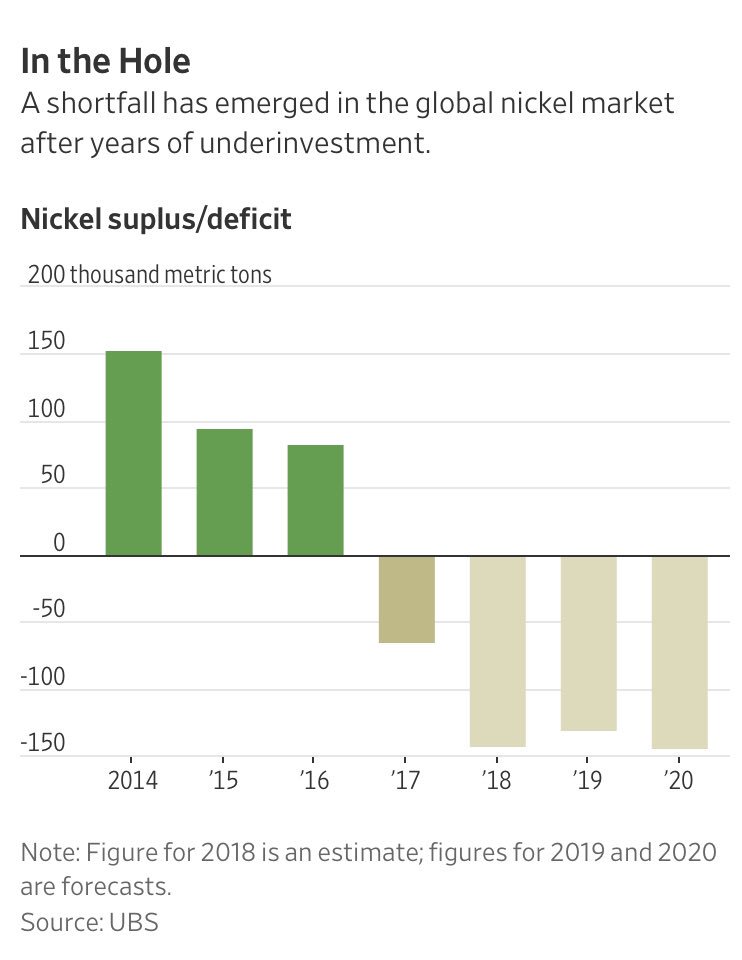The Dysprosium Shortage: A Looming Threat To Electric Vehicle Production

Table of Contents
The Crucial Role of Dysprosium in Electric Vehicles
The performance and efficiency of electric vehicles are heavily reliant on the technology embedded within their motors. At the heart of these motors lie neodymium magnets, powerful components responsible for converting electrical energy into mechanical motion.
Neodymium Magnets: The Heart of EV Motors
Neodymium magnets are essential because of their exceptional properties:
- High torque output: They deliver significantly higher torque than other magnet types, enabling EVs to achieve impressive acceleration and performance.
- Compact size: Their high magnetic strength allows for smaller and lighter motor designs, improving vehicle efficiency and maximizing available space.
- Energy efficiency: Their superior performance leads to less energy loss during operation, extending EV range and reducing charging frequency.
- Crucial for performance: They are fundamental to the overall performance, efficiency, and driving experience of electric vehicles.
These magnets are not simply neodymium; they are complex alloys, with dysprosium playing a vital role. Dysprosium enhances the magnet's coercivity – its resistance to demagnetization – particularly at higher temperatures. This is crucial for ensuring the continued high performance of EV motors under various operating conditions.
The Dysprosium Dependence
Neodymium magnets often contain a significant percentage of dysprosium, typically ranging from 1% to 10%, depending on the specific application and desired performance characteristics. The problem lies in the lack of easy substitutes. Dysprosium's unique magnetic properties make it exceptionally difficult to replace. Attempts to substitute it often result in significant performance degradation of the magnets, impacting the efficiency and power output of the EV motor.
- Limited substitutability: There are currently no readily available substitutes that offer equivalent performance characteristics at scale.
- Unique magnetic properties: Dysprosium's contribution to high coercivity is unmatched by readily available alternatives.
- Performance degradation with alternatives: Replacing dysprosium leads to weaker magnets, reducing motor power and efficiency.
While research continues into alternative magnet materials, such as those based on ferrite or other rare-earth elements, these solutions face significant limitations in terms of performance, cost, and scalability. These alternatives are not expected to be commercially viable at a meaningful scale for several years, at best.
The Current State of Dysprosium Supply and Demand
The current dysprosium market is characterized by a significant imbalance between supply and demand, further exacerbated by geopolitical factors.
Limited Sources and Geopolitical Risks
The geographical concentration of dysprosium mining and processing presents significant geopolitical vulnerabilities.
- China's dominance in the market: China currently controls a vast majority of the global dysprosium supply chain, from mining and refining to magnet manufacturing.
- Potential supply disruptions: This dependence creates significant risk of supply disruptions due to trade tensions, political instability, or unforeseen events.
- Environmental concerns related to mining: Dysprosium mining carries environmental risks, including habitat destruction and water pollution, adding another layer of complexity.
While other countries possess dysprosium reserves, expanding production faces numerous challenges, including high capital investment requirements, complex processing techniques, and stringent environmental regulations.
Rising Demand from Growing EV Sector
The rapidly expanding global EV market is driving an exponential increase in dysprosium demand.
- Exponential growth in EV sales: The global shift towards electric vehicles is accelerating, leading to a dramatic surge in demand for EV components, including dysprosium-containing magnets.
- Projected future demand: Industry projections indicate a continued and significant increase in dysprosium demand in the coming years, potentially outpacing supply significantly.
- Impact of government incentives and regulations: Government incentives and regulations promoting EV adoption are further amplifying the demand for dysprosium.
The projected growth of the EV market necessitates a robust and secure supply chain for dysprosium, without which the widespread adoption of EVs will be significantly hampered.
Mitigating the Dysprosium Shortage: Potential Solutions
Addressing the looming dysprosium shortage requires a multifaceted approach encompassing several key strategies.
Improving Recycling and Recovery
Recycling dysprosium from end-of-life EVs and electronic waste is crucial for increasing supply and reducing reliance on primary mining.
- Technological advancements in recycling: Developing more efficient and cost-effective techniques for separating and recovering dysprosium from complex materials is paramount.
- Economic incentives for recycling: Implementing robust economic incentives for the recycling of rare earth elements like dysprosium will encourage participation across the industry.
- Development of efficient separation techniques: Research and development efforts focused on improving the efficiency and cost-effectiveness of rare earth element separation are vital.
However, separating dysprosium from other rare earth elements during recycling remains a significant technical challenge.
Exploring Alternative Magnet Designs and Materials
Research into alternative magnet materials and designs that minimize or eliminate the need for dysprosium is essential for long-term sustainability.
- Research and development efforts: Significant investments in research and development of alternative materials are needed.
- Potential substitutes: Exploring alternative materials with comparable magnetic properties is crucial, though this is a complex and time-consuming process.
- Timelines for implementation: The development and commercialization of viable alternatives will likely take several years.
- Performance trade-offs: Any alternative will inevitably involve some trade-offs in terms of performance, cost, or other factors.
High-temperature superconducting magnets represent a potential long-term solution, offering extremely high magnetic fields without the need for rare earth elements, but are still far from widespread commercial viability.
Diversifying Supply Chains
Reducing reliance on a single source of dysprosium is crucial to mitigating geopolitical risks and ensuring supply stability.
- International collaborations: Strengthening international collaborations to develop and secure dysprosium resources is necessary.
- Investment in mining and processing in other countries: Encouraging investment in dysprosium mining and processing outside of China will promote diversification.
- Strategic partnerships: Establishing strategic partnerships between governments and private companies will ensure the development of secure and reliable supply chains.
However, establishing new mining and processing facilities faces challenges, including high upfront capital costs, strict environmental regulations, and the need for community acceptance.
Conclusion
The dysprosium shortage poses a substantial threat to the future of electric vehicle production and the broader transition to sustainable transportation. Addressing this challenge requires immediate and concerted action across multiple fronts. Improving recycling infrastructure, investing heavily in research and development of alternative magnet materials, and actively diversifying global dysprosium supply chains are all critical steps. Failure to act decisively risks hindering the progress of the green revolution and delaying the fight against climate change. The future of electric vehicles, and indeed, sustainable transportation hinges on finding effective and sustainable solutions to this looming dysprosium shortage. We must prioritize research, responsible mining practices, recycling technologies, and strategic partnerships to ensure a secure supply of this crucial rare earth element for the years to come.

Featured Posts
-
 Las Vegas Police Search For Missing British Paralympian Sam Ruddock
Apr 29, 2025
Las Vegas Police Search For Missing British Paralympian Sam Ruddock
Apr 29, 2025 -
 The Future Of Family Planning Over The Counter Birth Control And Its Post Roe Significance
Apr 29, 2025
The Future Of Family Planning Over The Counter Birth Control And Its Post Roe Significance
Apr 29, 2025 -
 Astedwa Lfn Abwzby Antlaq Almerd Fy 19 Nwfmbr
Apr 29, 2025
Astedwa Lfn Abwzby Antlaq Almerd Fy 19 Nwfmbr
Apr 29, 2025 -
 Cleveland Fans Ejection Highlights Mental Health Awareness After Durans Revelation
Apr 29, 2025
Cleveland Fans Ejection Highlights Mental Health Awareness After Durans Revelation
Apr 29, 2025 -
 Thirty Six Years Later An Ohio Sons Dilemma As His Fathers Parole Hearing Looms
Apr 29, 2025
Thirty Six Years Later An Ohio Sons Dilemma As His Fathers Parole Hearing Looms
Apr 29, 2025
